Well, due to life being what it is, I have been unable to complete monthly reviews and am now, instead, moving to quarterly summaries. In the first quarter of 2020, I read 54 books and watched 0 movies and 0 documentaries. So, instead of my usual divisions, I will break things down by genre.
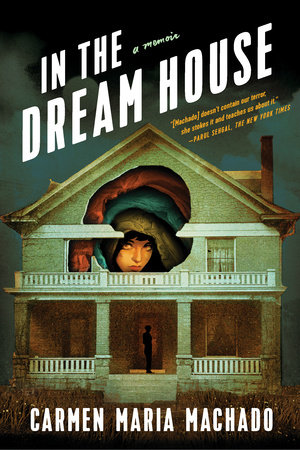
In the world of “literature,” I have one book to review (although a number of the books in my “science and nature” category count as literature of the highest quality). One book only, but what a book! In the Dream House, Carmen Maria Machado’s memoir of her relationship with an abusive partner is astoundingly good.
Various critics selected it as one of the best books published in 2019 and, in this case, I fully agree with the critics. It is one of the best books published in any year. At this point, I am hard-pressed to think of any group of writers who are producing works as good as that coming out of the queer, literary community—Maggie Nelson, Ocean Vuong, Carmen Maria Machado, just try and think of a trio from any other group of writers that can match the what they have done. So, if you’re looking for something to read in quarantine that is both brilliant and heart-breaking—and that you only put down at times because you can only handle so much of its incredible richness all at once—this book is very highly recommended. Read it. Seriously.
So, from one book to twenty-one books, poetry is the genre that I read the most over the last three months. This is unsurprising given that books of poetry tend to be short and tend to read quickly (although I also incline towards bingeing on poetry as a pursue certain intensities of emotion, rather than sipping it or abiding with each contribution to draw out its distinctive flavours like a connoisseur or sommelier). Stand out works include Ilya Kaminsky’s saga, Deaf Republic, and From Sarajevo with Sorrow by Goran Simić. Both deal with life in Eastern Europe in the collapse that followed the Second World War. Kaminsky’s Republic stands in for Ukraine, Simić’s account deals with the war in the Balkans in the mid-1990s. Both are beautiful and sad in ways that problematize the binaries we create between hope and hopelessness, and between surrender and resistance. Equally strong, are the works of the queer and gender-nonconforming Indigenous poets—Billy-Ray Belcourt’s This Wound is a World and Gwen Benaway’s Holy Wild.
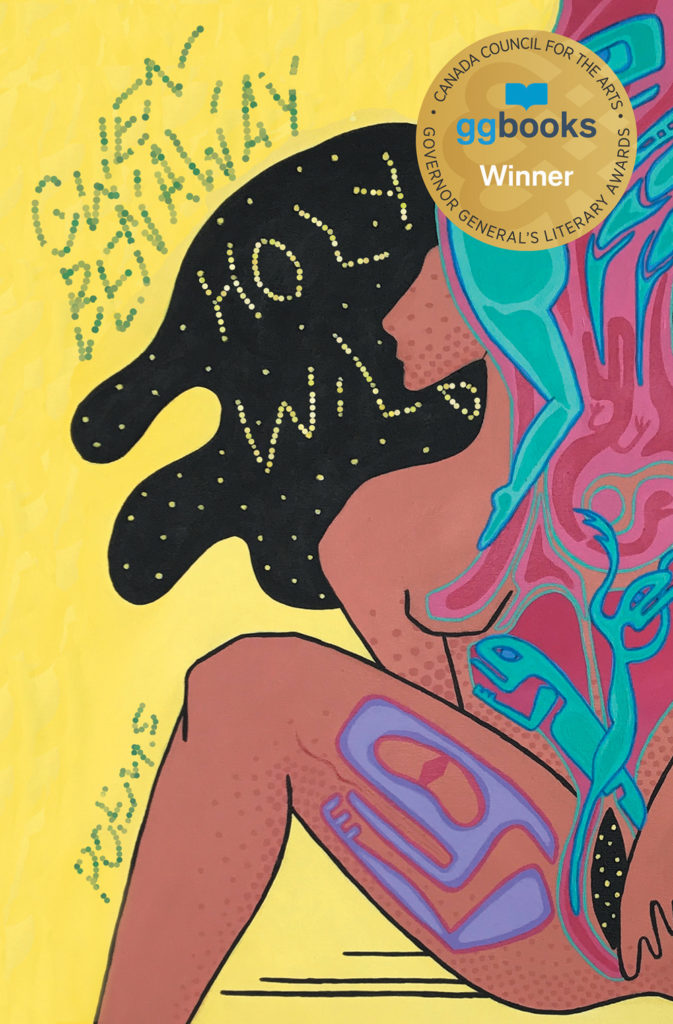
Here, themes of exploitation, abandonment, oppression, and occupation also persist but, over against the wearied sorrows of Kaminsky and Simić, Belcourt and Benaway both seize life and fuck it. And, speaking of fucking, How Poetry Saved My Life: A Hustler’s Memoir by Amber Dawn is an incredible blend of auto-theory, narrative, and poetry by someone who knows the ins and outs of sex work in Vancouver’s downtown eastside. There’s so much talk about sex work, prostitution, and human trafficking in the media these days, but if you really want to know what’s going on, listen to what sex workers are actually saying. That said, I think some of the poetry I read was too smart for me. I can’t tell if it feels like it’s trying too hard to be clever-esoteric-super-cultured-arthouse-type poetry, or if it’s just a clash of tastes, or if I’m still to new to the genre to be ready for more experimental forms, but both Sight Lines by Arthur Sze and Eye Level by Jenny Xie left me feeling not much of anything. Ditto for some of the older poets I read (Plath, Houseman, Thomas, Seidel, and Mandelstam). I also feel like something must have been lost in translation with Roberto Bolaño’s Romantic Dogs because Bolaño claimed to like his poetry more than his prose but it’s hard to see how that could be the case based on this collection. That said, it was nice to find some genuinely humourous poetry. Annie Dillard’s Found Poems is both brilliant and hilarious, Baby I Don’t Care by Chelsey Minnis grew on me more and more with every page and, although it certainly does not intend to be funny, I frequently laughed out loud while reading Bashō’s Back Roads to Far Towns. I absolutely do not understand Haiku or its appeal. That said, there were a few works that were strong but, because my expectations were too high, were still a bit disappointing. Homie by Danez Smith fell into that category because Don’t Call Us Dead was so outstanding. It had some stand-alone poems that were great but, as a whole, it wasn’t as strong (in my opinion) as his other work. I also really wanted to like Some Girls Survive on their Sorcery Alone by Thiahera Nurse but mostly didn’t get there (but, of course, as a young black woman’s cri de coeur, those poems aren’t written for me). I was also really hoping to like the collection of old-school Inuit poems compiled by Knud Rasmussen but two levels of translation (first to Danish then to English) mixed with a lack of cultural sensitivity and understanding made me seriously wonder if the Inuit poets would even recognize their work. Finally, given the various intersections that are interesting me at the moment, I was perhaps overly excited about The Perils of Geography by Helen Humphries. Songs for Relinquishing the Earth by Jan Zwicky, however, was not disappointing. A beautiful mediation on the world, the interconnectedness of life, and what it means to life when these things, as we know them, are passing.
The genre with the second highest number of books read this quarter is that of graphic novels. Hooray! For a few years now, I’ve had a growing list of graphic novels I have been wanting to read. But I struggle with purchasing graphic novels. As art books, they are more expensive (and rightfully so), but given the ways in which the combine text and image, they also read very quickly so I find myself asking, “Do I really want to pay $35 for a book I will finish in an hour?” (The answer is usually, “No.”) However, I had a sudden inspiration back in January. I remembered that there is this place called “the library” where you can go and get books for free as long as you return them when you are done with them. Pretty much the best idea ever! And they have been stocking up on solid collections of literary graphic novels—just the kind I like to read. Because, while some people may think graphic novels are little more than glorified comics, I think those people misunderstand just how powerfully word and image can be woven together in the art of storytelling. I consider some graphic novels to be amongst the most moving books I have read in any genre. So, this quarter, I read fifteen of them. A number of them were very good.

Lighter than My Shadow, Katie Green’s autobiographical work about disordered eating, family, and art is outstanding and probably the one that stayed with me the longest (in part because I have not read much literature that deals with disordered eating).
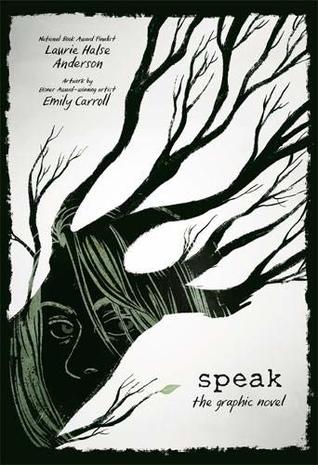
Speak, Emily Carroll’s graphic novel adaptation of Laurie Halse Anderson’s account of surviving and then overcoming sexual assault in the context of highschool is also top notch (readers with exceptional memories will know that I like Carroll’s work a lot).
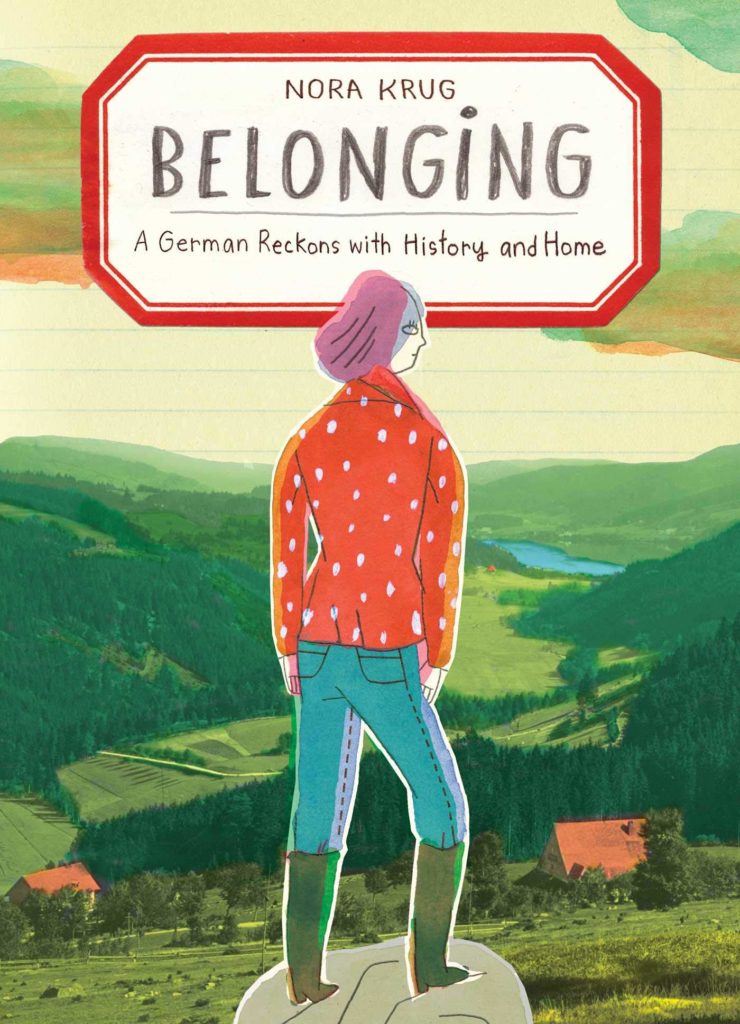
Belonging, Nora Krug’s exploration of what it means to be a German after WWII, a descendent of German’s who participated in WWII, a German in search of a homeland who wonders if that kind of search is even permissible to German’s after WWII is also very rich. It’s the kind of book that Canadians should read and for everything “German” they should substitute “Canadian” and for everything “genocide targeting the Jews” they should substitute “genocide targeting Indigenous peoples” and for every “what does it mean for me to search for home or try to be at home?” question Krug asks, they should ask themselves the same thing. Other strong candidates (although not quite as strong, in my opinion, as these first three and listed from strongest to least strong) are The Blue Road: a fable of migration which was written by Wayde Compton and illustrated by April Dela Noche Milne (one of several solid contributions from Arsenal Pulp Press, a publisher based on unceded Coast Salish territories commonly referred to as Vancouver, BC), This Woman’s Work by Julie Delporte (an examination of femininity, womanhood, and gender), and Swimming in Darkness by Lucas Harari (a roman noir that received high praise, I suspect, more because of the strength of the art than the power of the story). I found Death Threat by Vivek Shraya + Ness Lee to be the most disappointing of the critical acclaimed graphic novels I read this quarter (again, however, that story isn’t written for me). Two surprise hits were Park Bench, a beautiful and humourous story told by the acclaimed French graphic novelist, Chabouté (a story told without words), and Killing and Dying, six short stories created by Adrian Tomine, which play with various kinds of stories and various styles of illustration but which all carry a certain rawness and melancholy. I picked it up on a whim (why not? the library is free!), and liked it enough to check-out another of Tomine’s stories, Shortcomings, which although more highly praised fell much flatter to me (it tries to explore matters related to race in non-stereotypical ways but basically left me wondering if Tomine is a dick). I also read two by Jeff Lemire—The Underwater Welder and Frogcatchers—and while they were decent, they don’t live up to the bar he set (perhaps impossibly high) for himself with his Essex County trilogy. I also tried one more by David Small called Home After Dark, because his previous autobiographical work, Stitches, was a near miss in my books. Home After Dark felt about the same to me. Finally, I also decided to read The Cage by Martin Vaughn-James. Published in 1975, and considered one of the precursors to the entire genre I was curious about it. But, really, it felt like someone who got really high and watched L’Année dernière à Marienbad and felt super-inspired and decided to make their own version of it and they thought it was awesome but really they were just high.
However, the books that really filled me with wonder, made me say “wow!” over and over, and filled me with gratitude because I get to participate in life (whatever that is), are in the science and nature category. In this category, I read eight books, a number of which are absolutely outstanding (I need to expand the number of words I use for when I get excited about things … I feel like my critical reviews are more engaging than my glowing reviews which tend to just say things like, “awesome!” and “read this book!” over and over). My new favourite author is Robert MacFarlane. Now, especially now, as we move from crisis to crisis, as our lives are dominated by technological changes that we can’t even register existentially before another change occurs, and as the world around us both dies and changes dramatically, I think Robert MacFarlane is the author to read. His books are slow. They are thoughtful. They choose their words precisely not, in order to suggest that things can be truly captured in words, but in order to respect the uncapturable nature of things with words. MacFarlane, in the ways he wonders through space and language, reminds us of things we have forgotten, he brings us back to connections made across time and space and being, and he stills our minds so that we can listen to our hearts.

I read two of his books this quarter—The Old Waysand Landmarks. Both are exceptional. I very much look forward to reading Underland, which was also one of the most highly praised of 2019. The other book in this category that absolutely blew my mind was Viruses: Agents of Evolutionary Invention by Michael G. Cordingley.

I’ve been wanting to study viruses more ever since I got into microbiology, genetics, ecological development, and evolution. The question of how viruses relate to “life” (and if they are or are not “living” was one I found especially striking—as I explore in more detail in this recent blog post). So, with somewhat serendipitous timing, I actually read this book just before the COVID situation went boom. The truth is we know almost nothing at all about viruses (it is estimated that we don’t know anything about 99.998% of viruses), so trying to speak about viruses, as a singular entity, would be kind of like another life form trying to speak about human beings if they only know Jeff Bezos, Bill Gates, Warren Buffet, Larry Ellison, and Bernard Arnault. Just as we have learned that bacteria are actually complex, intelligent forms of life (with, for example, both innate and adaptive immune systems!), and just as we have learned that bacteria actually contribute in extraordinary ways to the greater flourishing of a greater diversity of life so, I suspect, we will end up learning the same thing about viruses. I’m calling it now. Regardless, with COVID going on, this is a fantastic book to read to learn a thing or two about the virome. That said, one of the thigns I’ve learned to do is to pay attention to books that are mentioned by authors I love and I did this with Robert MacFarlane and so three other very good books I read in this category were selected because MacFarlane praised them. From most to least favourite, these are Arctic Dreams by Barry Lopez (written in the Arctic in the ‘80s), The Snow Leopard by Peter Matthiessen (written in Nepal in the ‘70s) th, and The Living Mountain by Nan Shepherd (written in Scotland’s Cairngorms in the ‘40s). Lopez’s book is a very beautiful meditation on the Arctic ecosystem, with a focus on the various Inuit cultures and their predecessors as well as the forms of animal life found there. Matthiessen’s book is definitely a product of its time, combining meditations on Buddhism with a soul-searching travelogue infected with the classist, colonial and understated but persistent racism one might expect to find in an upper-class, over-educated Brit (think a mountaineering version of Zen and the Art of Motorcycle Maintenance written by an Eton College grad—I suspect this book ages about as well as that one). And Nan Shepherd’s book has its moments of brilliance—and I can see how it inspired MacFarlane both because Shepherd attends to the less glamourous things that others neglect (unlike mountaineers who want to conquer mountains by climbing them, Shepherd wants to enter into the mountain by getting to know it), but I found her prose to be a bit more flat than that of Lopez and Matthiessen. However, after immersing myself in these very literary but still scientific travelogues (what genre is this exactly??), I felt like reading something a bit more sciency and so turned to Environmental Evolution: Effects of the Origin and Evolution of Life on Planet Earth, edited by Lynn Margulis and Lorraine Olendzenski. I’ve been wanting to read Lynn Margulis for quite some time, given her influence on theories about endosymbiosis and the interconnectedness of life, and this selection of essays she helped to compile is certainly fascinating. And very, very eclectic. One goes from reading about how Mercury, Venus, and Earth were formed, to reading about fossil stromatolites in the Middle East, to reading about how lipid barriers evolved to create cell walls, to reading about the Gaia theory of earth. It’s definitely dense (the scientists are sciencing!) but it was also full of “wow” moments for me. The only book in this category that I found somewhat disappointing this quarter was Animals Strike Curious Poses, a series of literary essays featuring either a famous animal or a famous event related to animals. All the essays are very clever (for example, a short essay about a show jumping horse gradually reveals itself to be describing the event when Christopher Reeves was paralyzed, although the essay never names him) but, I don’t know, they just didn’t catch me at the right time. I know others who speak very highly of this book, so you might still want to check it out.
Onwards then, to philosophy, social theory, and a few things I read in relation to my work. At some point, I started craving a “big” philosophy book. Thanks to a lucky find at a used bookshop, I stumbled onto a steal of deal with Paul Ricoeur’s Memory, History, and Forgetting which has been on my “to read” list for years. So, I picked it up and read it. Parts of it got me excited. Parts of it took me awhile to understand just why Ricoeur felt like he had to spend time addressing this-or-that subtopic (which shows my own distance from historians who write about historiography and the kind of debates they have and factions they have formed). All in all? Interesting … not earth-shattering. But interesting. The theory that really captured my attention was Theodore W. Allen’s two volume series on The Invention of the White Race.
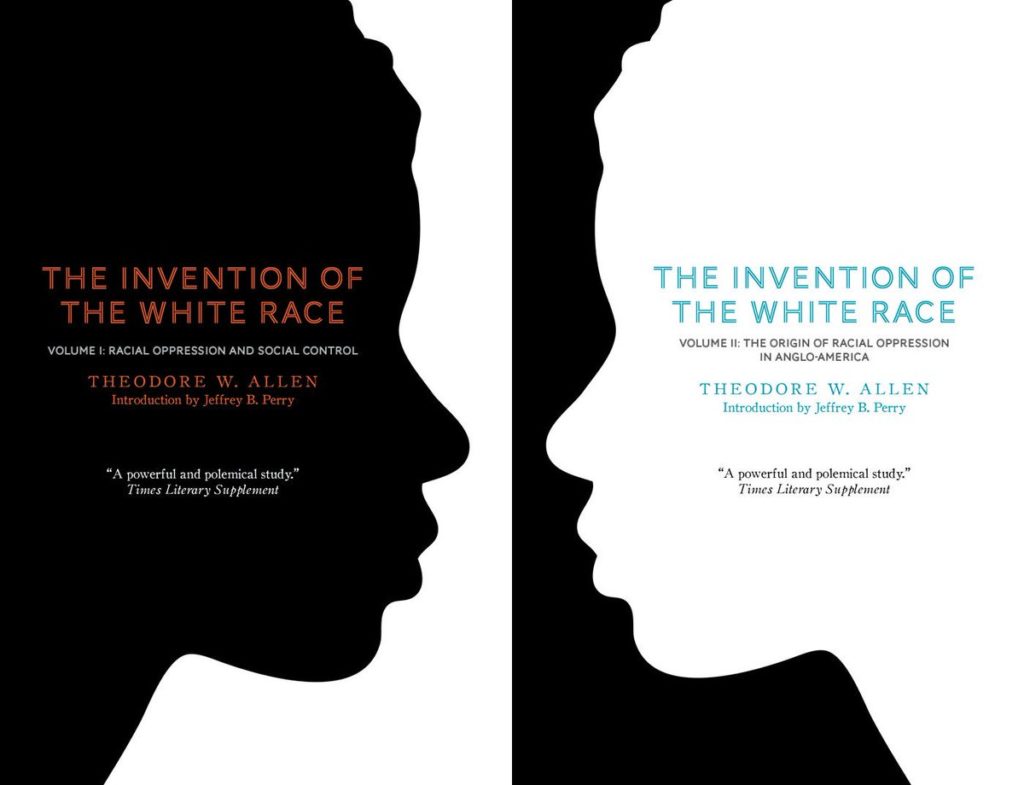
I’ve really been digging more into the history and nature of Whiteness. It’s something that I feel all White people should examine—not least because speaking about Whiteness seems to be especially taboo amongst White folx. In many ways, what Allen says ties in with Nell Irvin Painter’s conclusions in The History of White People but I especially appreciate how deeply he went back into the history of the British colonization of Ireland and how race was deployed there along with a whole host of other colonial dynamics that are still, today being used by colonial states like Canada in relation to the people of this land. It also highlights the lie involved in the naivete and good intentions states like Canada claim when they talk about things like Indian Residential Schools—such Residential schools were used by the British almost two hundred years before Canada used them and, even before Canada existed, the devastating consequences that result from implementing that model were well-known. Anyway, a genuinely fascinating work, even though I am rethinking parts of it in light of J. Sukai’s books, Settlers, which seeks to explode “the myth of the white proletariat” as it is said to have existed on Turtle Island. I would love to talk about this more with White peeps—hey, Whites, learn your history! The third book of theory that I read this quarter was Carceral Humanitarianism: Logics of Refugee Detention by Kelly Oliver. It’s a good title and lines up with themes that I have been interested in, while also helping me to think more of how those themes relate to border imperialism. Oliver certainly does do a good job of showing how warmongering and international aid go hand-in-hand and this is more up-to-date than some other texts I have read in this regard but a lot of this material is covered elsewhere. So, I decided to dip back into some of the psycholanalysis and affect theory that I got into last year and I read Sara Ahmed’s The Promise of Happiness which is very good and very timely, given the ways in which happiness has increasingly become mandated in our societies and given that (as Ahmed shows very well) this happiness is, in fact, a happiness seeks to include some while excluding others. Given that, Ahmed asks some good questions about the affects of resistance. I also read one book in the disabilitities studies category, Disfigured: On Fairy Tales, Disability, and Making Space by Amanada Leduc.
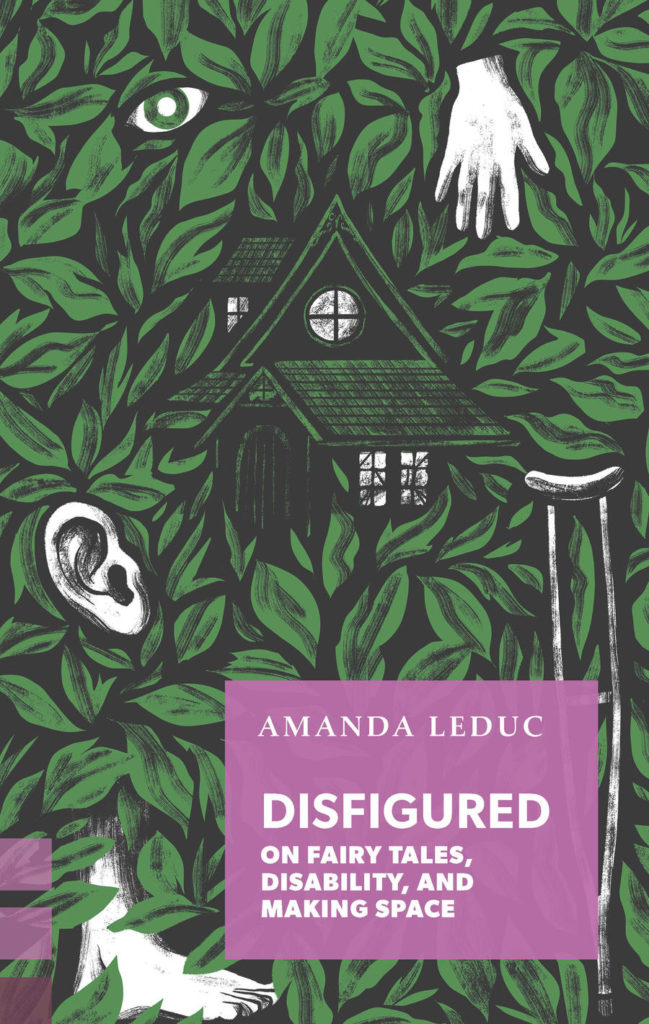
It caught my eye because of my ongoing interest in fairy tales and how they are deployed and, while a decent enough book, I feel like maybe I was hoping for something a little more creative. So, from there I turned to two books I wanted to read and consider for the program development work that I do: Making Spaces Safer: A Guide to Giving Harassment the Boot Wherever You Work, Play, and Gather by Shawna Potter, and Turn This World Inside Out: The Emergence of Nurturance Culture by Nora Samaran (aka Naava Smolash). Potter’s book was excellent and full of very practical advice for real life scenarios. I like her emphasis on how any space can be made safer, even if we cannot guarantee that any space is 100% safe all the time. Samaran’s book was more disappointing. It has both the strengths and weaknesses of books that are built on short articles that go viral. So, of course, the viral essay on nurturance culture is fascinating—even though I think Samaran’s analysis needs to be adjusted with Manne’s remarks on how abusive men are, in fact, seeking women to nurture them on the regular, as well as anarchist principles regarding the corrupting nature of power hierarchies (as exemplified in the nurturing person of Jean Vanier who was a serial sexual abuser)—but some of the other parts felt patched together and less strong. Regardless, I still enjoyed it. The book that I enjoyed least of all this month, however, was Boys and Sex: Young Men on Hookups, Love, Porn, Consent, and Navigating the New Masculinity by Peggy Orenstein. I was hoping for some insights here, as I think about my son getting older, but, despite the titular claim, there was nothing really new here at all. I would give this one a pass.